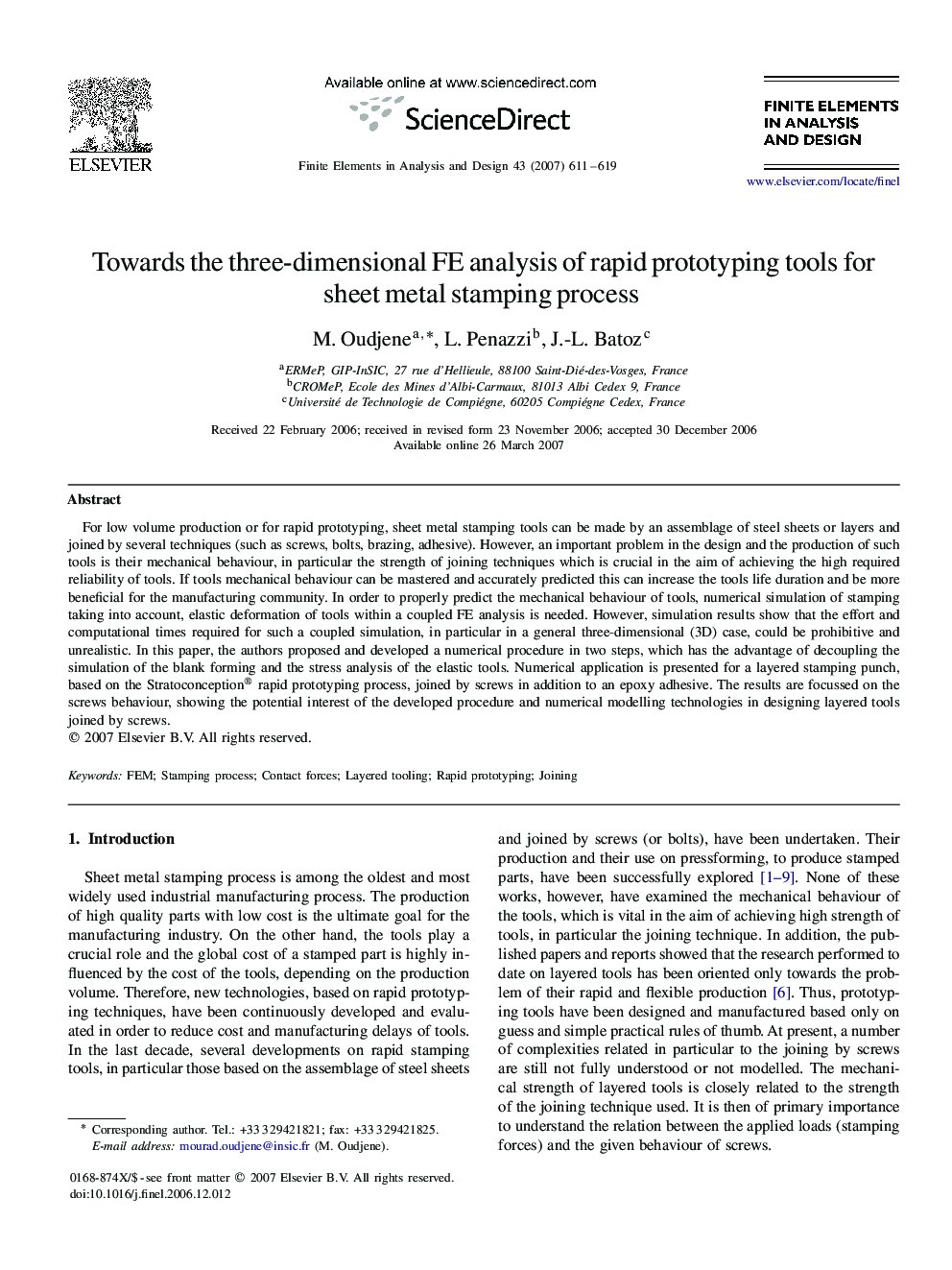| Article ID | Journal | Published Year | Pages | File Type |
|---|---|---|---|---|
| 514783 | Finite Elements in Analysis and Design | 2007 | 9 Pages |
For low volume production or for rapid prototyping, sheet metal stamping tools can be made by an assemblage of steel sheets or layers and joined by several techniques (such as screws, bolts, brazing, adhesive). However, an important problem in the design and the production of such tools is their mechanical behaviour, in particular the strength of joining techniques which is crucial in the aim of achieving the high required reliability of tools. If tools mechanical behaviour can be mastered and accurately predicted this can increase the tools life duration and be more beneficial for the manufacturing community. In order to properly predict the mechanical behaviour of tools, numerical simulation of stamping taking into account, elastic deformation of tools within a coupled FE analysis is needed. However, simulation results show that the effort and computational times required for such a coupled simulation, in particular in a general three-dimensional (3D) case, could be prohibitive and unrealistic. In this paper, the authors proposed and developed a numerical procedure in two steps, which has the advantage of decoupling the simulation of the blank forming and the stress analysis of the elastic tools. Numerical application is presented for a layered stamping punch, based on the Stratoconception®® rapid prototyping process, joined by screws in addition to an epoxy adhesive. The results are focussed on the screws behaviour, showing the potential interest of the developed procedure and numerical modelling technologies in designing layered tools joined by screws.
